Within a certain set of parameters, silver salmon will eat ANYTHING.
OK, that requires a little explanation. Within any group of silvers (and probably any other species of fish) there is a range of aggressiveness. For example, if you find a school of 100 silvers, 10 will eat almost anything you throw at them (Please keep in mind I am making these numbers up, based on six seasons of observations. It could be more, or less.). Another five or so might eat if you show them your best fly, perfectly presented. The rest won’t eat anything, regardless of what you try. You need to find another group of fish once the bite stops. Yes, they are still there, but no, they won’t eat any more.
Most fly fishers love a surface bite. If you want to catch them on top you need to try a surface fly as soon as you find some fish. Get the aggressive ones before they all wise up!
Some folks like clipped deerhair flies, some like poppers. I think that for ease of tying combined with ease of casting you can’t beat a craft foam gurgler. Tie it on a #2 Mustad 36890 salmon fly hook or equivalent in pink or orange, with a cerise marabou tail and a cerise Estaz body. It’s a five minute tie that’s good for 15 or 20 fish before it’s torn apart.
The fish will eventually refuse to rise. Switch to a streamer.
My favorite is what I call the silver salmon Clouser Minnow. Tie it on the same hook as above, or on a Mustad 3407. Use a 1/30th ounce lead eye. Use wig hair (or bucktail) for the wing, and tie in a Puff-like head around the lead eyes with Estaz. Effective colors include cerise, hot pink, orange, purple, blue, black, chartreuse, and various combinations of these colors.
The short list includes one more pattern, the marabou (or bunny strip) tail fly. Same hooks, same lead eye. Tie in a tail of marabou (or bunny strip) in one of the above mentioned colors. Tie in a piece of Estaz and wrap it around the shank to the lead eye. If you want to get fancy, add sili-legs. Again, it’s a five minute tie that will catch a lot of fish before they tear it apart.
Of course, the cerise bunny leech that was described in the blog about king salmon flies is always in good taste, too.
You could go crazy tying articulated flies that take 30 or 40 minutes each. These fish ain’t that fussy. The above flies will cover almost every situation you find yourself in when fishing for silvers. Try this short list of Flies for Goodnews River Silver Salmon when fishing for silver salmon anywhere.
John Kumiski
http://www.spottedtail.com
All content in this blog, including writing and photos, copyright John Kumiski 2012. All rights are reserved.
|
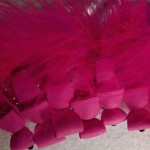
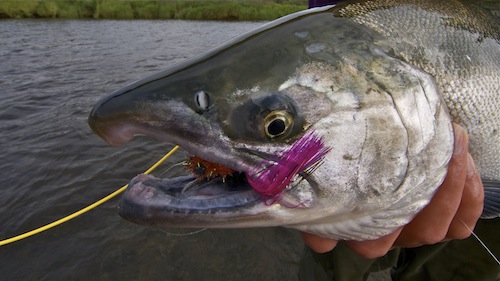
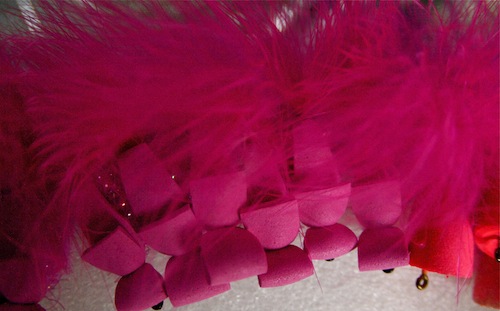
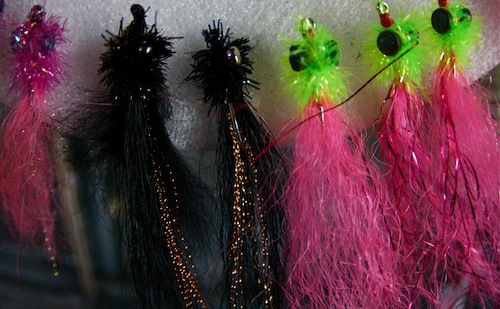
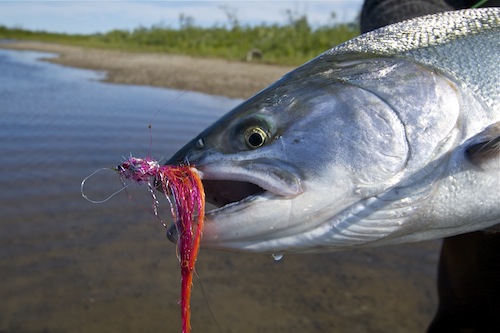
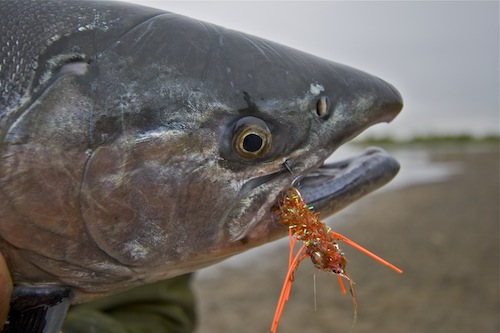
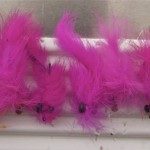
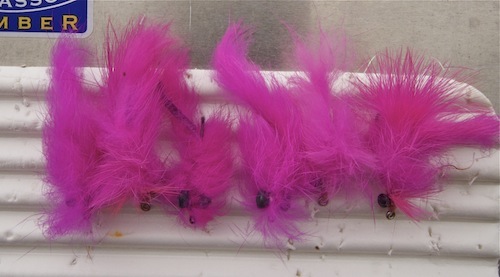
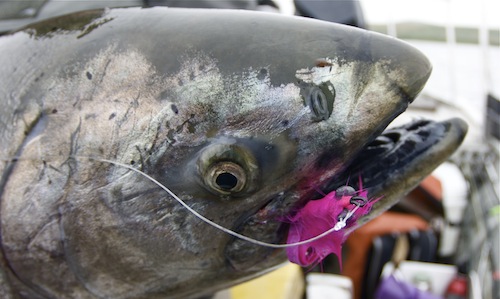
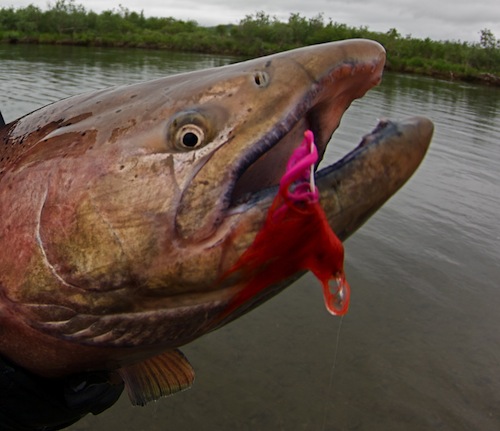
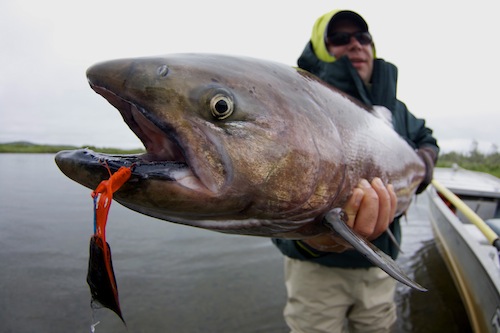
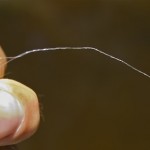
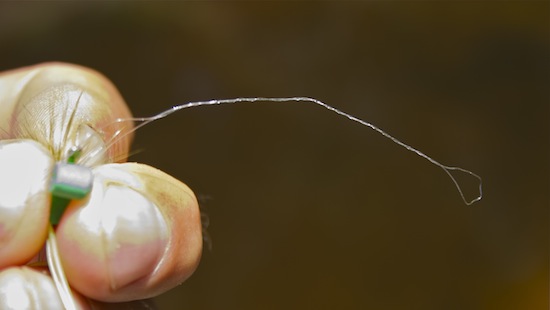
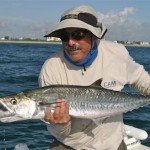
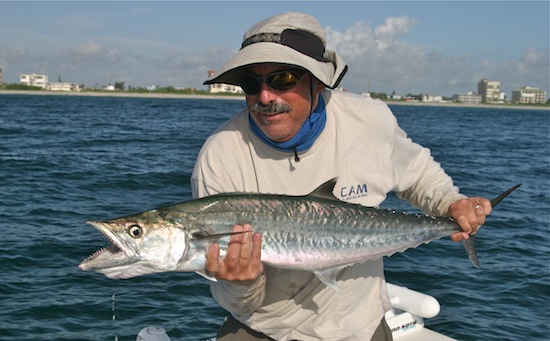
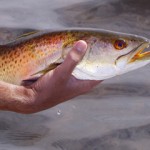
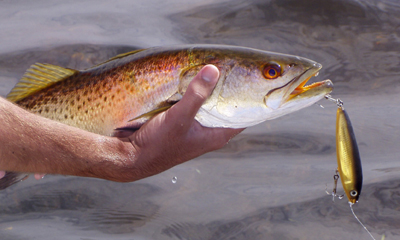
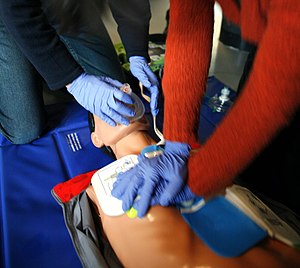
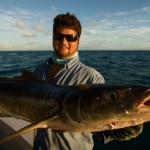
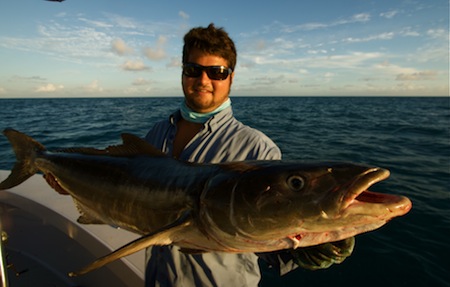
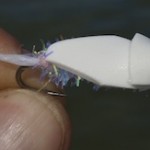
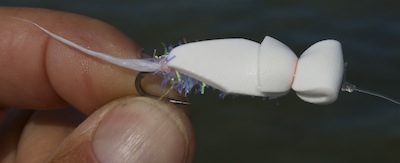
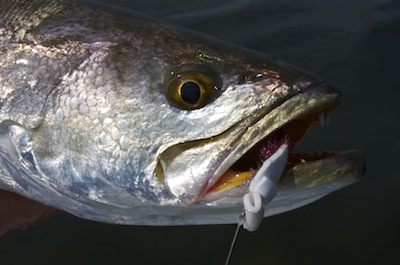
Recent Comments